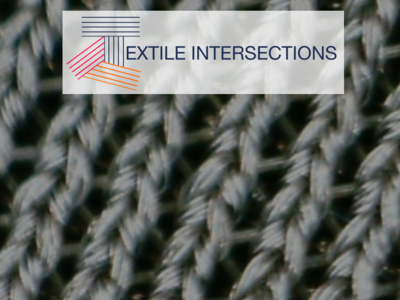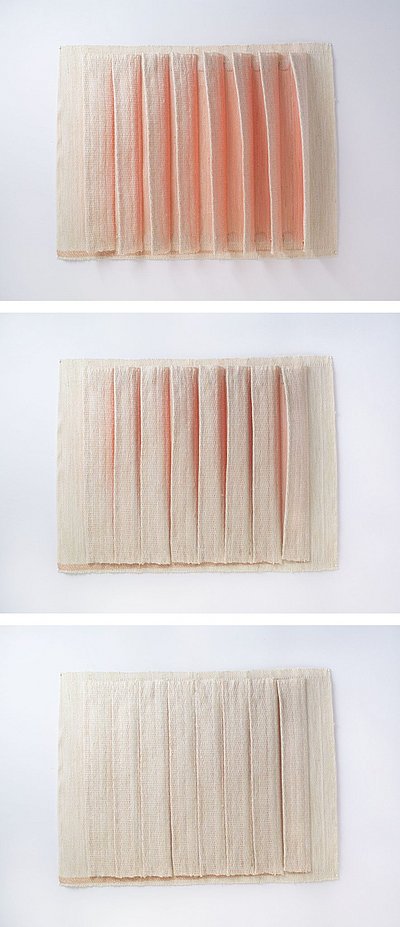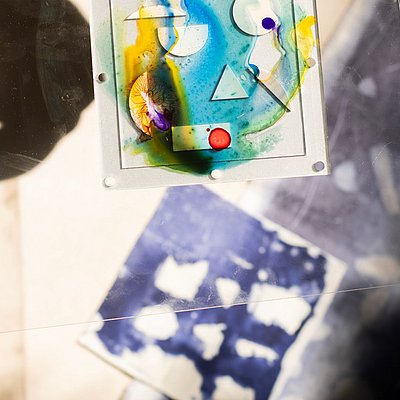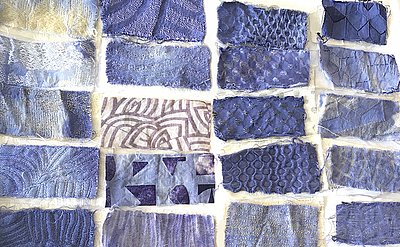Textiles Intersections
20. bis 23. September 2023 Here East, Loughborough Campus, London
Konferenzteilnahme von Co.Lab Crafting Futures / Abteilung Design und Technik mit Projektpräsentation und Ausstellungsbeteiligung.
Julia Moser präsentiert am 2. Konferenztag, 22. September 2023, im Rahmen des Panel 3 "Biotextiles and Sustainable Textiles":
Growing Patterns: Textile Design with Living Pigments
Moser Julia, Fleck Karin und Posch Irene
A turn towards the development of sustainable textile dyes moved new pigments into the centre ofattention – the pigments metabolised by pigment-producing bacteria. In this paper, we presentpractice-based research that aims at expanding the field of textile dyeing with living bacteria throughexploring possibilities for intentional pattern design. Experiments were guided by two researchquestions: RQ1: How can the use and combination of different textile fibres influence and enable textilepattern development with bacteria? RQ2: How can textile surface manipulation techniques be used forpattern design with living pigments? We show a series of 40 different samples that are the result ofcombining bacterial dyeing methods with diverse textile and digital fabrication technologies. We useone type of bacterial strain Janthinobacterium lividum, whose bluish-purple pigment violacein is a verypromising metabolite for textile dyeing. It is then confronted with 3D printing on textiles, jacquardweaving with a combination of different fibres in warp and weft, laser engraving, wax resist, platepressing and colour injection techniques, among others. These foster an interplay of human controland bacteria growth combining control and chance, guidance and self-determination, given paths andown ways. Our study contributes initial insights into how textile design with living pigments may expandboth, aesthetic expressions and the application spectrum for simultaneous fermentation and dyeing oftextiles with non-modified living chromogenic bacteria. The broader aim of the research is to make thisnew dyeing method competitive with methods that are currently predominant but highly hazardous.
Keywords: bacterial pigments; violacein; textile pattern design; biodyes
Conference programme: www.textile-intersections.com
Des Weiteren sind zwei Ausstellungsbeiträge von Julia Moser und Irene Posch zu sehen:
Magnetic Reverberations
Elizabeth Meiklejohn, Laura Devendorf und Irene Posch
What might a woven solenoid look like, and what could it do? This interactive textile reimagines electromagnetic actuators through the lens of soft goods and hand-operated Jacquard weaving. Magnets and copper coils embedded in the fabric’s layers enable the flaps on its surface to open and close, revealing the warm glow of neon yarns hidden inside.
Growing Patterns. Living Pigments
Julia Moser
„Growing Patterns. Living Pigments“ is exploring the possibilities of dyeing textiles with pigment-producing bacteria. The combination of this resource-saving and environmentally friendly dyeing method with traditional and new technologies for the creation of intentional forms and shapes opens up completely new possibilities for making the world not only more colorful but also „greener“ and thus more sustainable.



